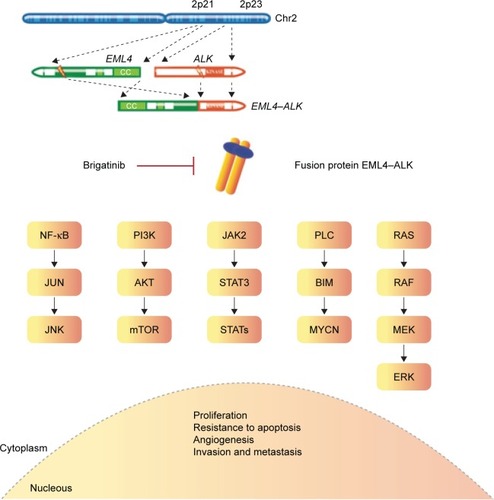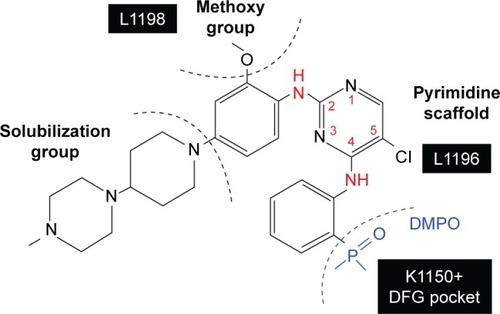Figures & data
Figure 1 The EML4–ALK rearrangement and downstream signaling.
Abbreviation: ALK, anaplastic lymphoma kinase.

Figure 2 Brigatinib structure.
Abbreviations: ALK, anaplastic lymphoma kinase; ATP, adenosine triphosphate; DMPO, dimethylphosphine oxide.

Table 1 Clinical outcomes of brigatinib, alectinib, and ceritinib after crizotinib treatment in patients with ALK-rearranged lung cancers
Table 2 Brigatinib activity against various ALK mutations
Table 3 AEs observed with brigatinib, alectinib, and ceritinib
